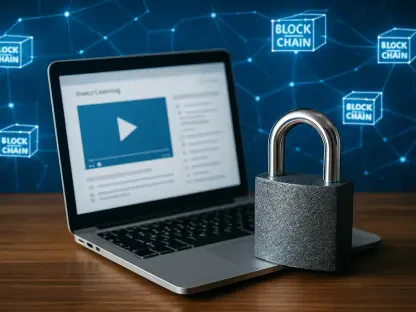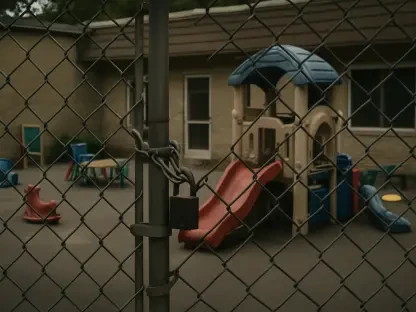In a world where educational access remains uneven, particularly for women grappling with systemic barriers, remote learning emerges as a powerful tool to bridge the gap and foster gender equity on a global scale. Millions of women face challenges that prevent them from engaging in traditional, in-person education—whether due to caregiving duties, health conditions, or safety concerns. Remote education, with its historical roots stretching back centuries, offers a flexible alternative that can adapt to these diverse needs. This approach not only addresses individual constraints but also tackles broader societal inequities, making it a critical component of feminist and social justice movements. By exploring the evolution of nontraditional learning models, the persistent obstacles they face, and the urgent need for their expansion, a clear path forward emerges to ensure women everywhere have the opportunity to pursue knowledge and empowerment. This discussion aims to highlight why prioritizing remote education is essential for creating an inclusive academic landscape that serves all, regardless of circumstance.
Tracing the Legacy of Flexible Learning
The concept of remote education is deeply rooted in history, dating back to the early 1800s when correspondence programs at institutions like the University of Chicago enabled learning for those unable to attend physical campuses due to geographic or physical limitations. These early initiatives catered to a wide range of individuals, from veterans to homemakers, recognizing that access to education should not be confined to traditional settings. By the early 1900s, innovative solutions like radio-based “Schools of the Air” in the United States and Australia delivered lessons to children in remote areas or with medical conditions, further expanding the reach of education. These pioneering efforts laid the groundwork for understanding that flexibility in learning is not a modern convenience but a long-standing necessity for inclusivity, particularly for those marginalized by conventional systems.
Fast forward to the 1970s, and programs like the University Without Walls (UWW) marked a significant evolution in remote higher education by explicitly targeting nontraditional students, including housewives, veterans, and individuals with disabilities. UWW and similar initiatives offered tailored curricula that acknowledged the unique circumstances of these learners, proving that education could be both accessible and rigorous outside the confines of a classroom. This historical trajectory underscores a consistent theme: flexible learning models have always aimed to democratize education, breaking down barriers that disproportionately affect women and other underserved groups. The lessons from these early endeavors remain relevant today, as the need for adaptable education continues to grow in response to contemporary challenges.
Voices of Resilience and Advocacy
Behind the historical milestones of remote education lie personal stories of determination that illuminate the human cost of inaccessible learning systems. Consider the experience of Maureen Ann Nolan in the 1970s, a woman with a physical disability who faced significant institutional resistance when seeking higher education. Despite being viewed as a burden by some administrators, Nolan persisted, utilizing remote call-in options to earn degrees from multiple institutions. Her journey exemplifies the barriers that many women and marginalized individuals encounter, as well as the transformative power of remote access when it is made available. Such narratives reveal not only the grit required to navigate exclusionary systems but also the profound impact of individual advocacy in pushing for broader change.
These struggles are not relics of the past but echo in more recent experiences, where even protective legislation like the Americans with Disabilities Act (ADA) fails to guarantee accommodations. Many students still confront skepticism or outright denial when requesting remote or hybrid learning options, often due to vague institutional policies. These recurring challenges highlight a critical gap between policy intent and practical implementation, disproportionately affecting women who may already juggle multiple roles or health concerns. The persistence of such barriers emphasizes the need for systemic reform, ensuring that personal triumphs over adversity become the norm rather than the exception in the pursuit of education.
Gendered Barriers and Intersectional Needs
Remote education transcends the realm of disability access, emerging as a vital issue of gender equity due to the unique and overlapping challenges women face. A significant number of college students, predominantly women, shoulder caregiving responsibilities for family members, often at the expense of their academic progress. This burden, combined with economic pressures, frequently forces women to prioritize others’ needs over their own education, a choice that traditional in-person programs rarely accommodate. Remote learning offers a lifeline in these situations, allowing flexibility to study while managing household demands, yet access to such options remains limited for many who need them most.
Beyond caregiving, women are also disproportionately affected by chronic health conditions, such as autoimmune diseases, which can be exacerbated by environmental factors like climate change, making physical attendance at campuses difficult or impossible. Additionally, safety concerns—ranging from campus violence to immigration enforcement actions—deter many women, especially from marginalized communities, from returning to in-person settings. These intersectional barriers illustrate that the lack of remote options is not merely an inconvenience but a profound obstacle to equity. Addressing these multifaceted challenges through expanded remote education is essential to ensure that women are not forced to abandon their aspirations due to circumstances beyond their control.
Cultural and Professional Stigma Challenges
Even with its long history and proven necessity, remote education continues to battle a persistent stigma that undermines its value and limits its adoption. Before the widespread shift to online learning during the COVID-19 pandemic, employers often viewed degrees earned through remote programs with skepticism, leaving graduates hesitant to disclose their educational paths or explain personal circumstances. This bias created an additional layer of disadvantage for women who relied on such programs to balance education with other responsibilities, as their qualifications were unfairly questioned in professional settings. The cultural perception of online learning as inferior remains a hurdle to its broader acceptance.
Post-pandemic, despite the normalization of virtual platforms, a troubling regression has emerged, with governmental and institutional mandates pushing for a return to in-person models. This resistance overlooks the millions of women who depend on remote learning to manage health issues, family obligations, or unsafe environments. The reluctance to embrace flexibility as a permanent fixture in education reflects a broader societal challenge: valuing tradition over innovation. Overcoming this stigma requires a concerted effort to reframe remote education as a legitimate and rigorous pathway, ensuring that women and other nontraditional students are not penalized for choosing a format that aligns with their lived realities.
Systemic Obstacles in Policy and Institutions
The barriers to remote education are not solely cultural but are deeply embedded in policy and institutional frameworks that fail to prioritize accessibility. Legislative measures like the ADA, intended to protect students with disabilities, often fall short due to loopholes that allow institutions to deny accommodations if they are deemed an “undue hardship.” This ambiguous standard has been repeatedly invoked to reject requests for remote or hybrid learning, leaving many women and marginalized students without viable alternatives. Such policy gaps reveal a systemic oversight in adapting educational structures to meet diverse needs, perpetuating exclusion under the guise of practicality.
Moreover, prestigious colleges and universities frequently resist deviating from traditional residential models, valuing legacy and conventional prestige over accessibility and innovation. This institutional inertia not only limits options for remote learning but also sends a message that adaptability is secondary to outdated norms. For women who may already face economic or social constraints, this resistance can be particularly detrimental, as it restricts access to quality education that could otherwise transform their lives. Addressing these systemic obstacles demands a reevaluation of what constitutes hardship and a commitment to redefining educational excellence through inclusion rather than exclusion.
Building a Future of Inclusive Learning
To dismantle the barriers facing remote education, a comprehensive push to normalize and expand such programs across all levels of academia is imperative. This involves reexamining policies that label accommodations as burdensome, instead focusing on how to make flexibility a standard offering. Investments in research for effective online teaching practices, alongside professional development for instructors in virtual environments, are critical to ensuring that remote learning maintains the same rigor and engagement as in-person education. For women balancing multiple roles, these advancements could mean the difference between pursuing a degree and abandoning it altogether.
Additionally, private institutions must lead by example, redefining prestige through innovation rather than clinging to traditional models. By prioritizing hybrid and online programs that foster mentorship and quality instruction, these schools can prepare students for real-world impact while meeting the needs of diverse learners. The expansion of remote education is not about lowering standards but about raising accessibility, ensuring that women worldwide can access learning opportunities tailored to their circumstances. This shift requires a collective commitment to viewing flexibility not as a concession but as a cornerstone of modern education, capable of addressing the complex realities of today’s global landscape.
Meeting Diverse Realities with Adaptability
The expansion of remote education is not a universal solution, but it serves as an indispensable resource for women and marginalized groups navigating unique constraints. For those managing caregiving duties, chronic health conditions, or unsafe campus environments, virtual learning provides a critical pathway to continue their education without sacrificing other responsibilities. This adaptability ensures that systemic barriers do not dictate who can learn, offering a means to pursue knowledge despite personal or societal challenges. Prioritizing such options aligns educational systems with the pressing social, environmental, and economic issues of the current era, fostering a more equitable framework.
Moreover, embracing remote learning as a legitimate and necessary component of education requires addressing the diverse needs of students through tailored approaches. This means not only increasing the availability of online programs but also ensuring they are designed with input from those who rely on them most, such as women facing intersectional barriers. By integrating flexibility into the core of educational planning, institutions can create environments where no one is left behind due to circumstance. This focus on adaptability signals a broader shift toward inclusivity, recognizing that true equity in education must account for the varied realities of learners across the globe.
Forging Pathways to Empowerment
Reflecting on the journey of remote education, it’s evident that past efforts laid a foundation for access that was once unimaginable for many women and marginalized individuals. Historical innovations, personal battles against institutional resistance, and the recognition of intersectional challenges all pointed to the necessity of flexible learning as a tool for equity. The struggles against stigma and policy gaps highlighted a persistent gap between potential and reality, one that demanded urgent attention. By confronting these issues head-on, strides were made to ensure that education could adapt to the needs of those it often overlooked.
Looking ahead, the focus must shift to actionable steps that build on these lessons, creating a future where remote learning empowers women worldwide. This involves sustained investment in virtual platforms that rival traditional settings in quality, alongside policy reforms that eliminate vague exemptions and prioritize accessibility. Institutions are challenged to redefine their missions, placing inclusivity at the forefront to ensure no woman is forced to abandon her education due to systemic barriers. Through these efforts, a vision of education as a true equalizer takes shape, offering every individual the chance to thrive regardless of their starting point.









